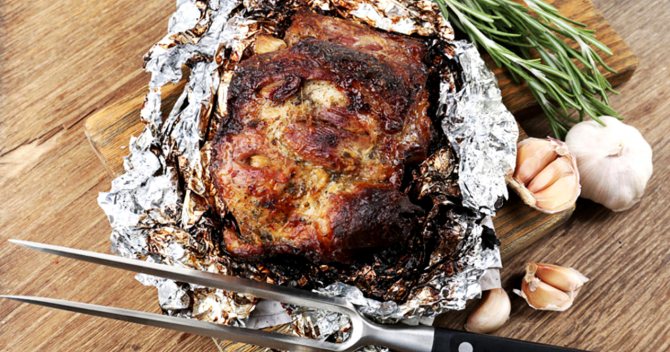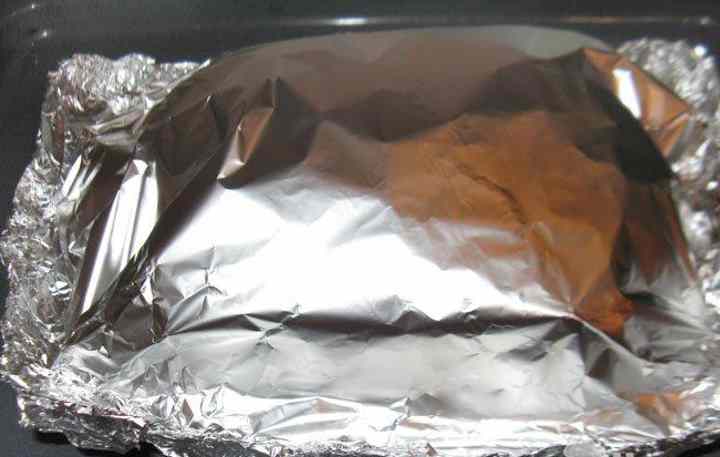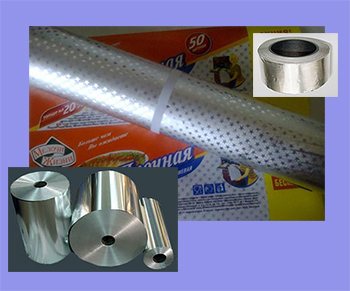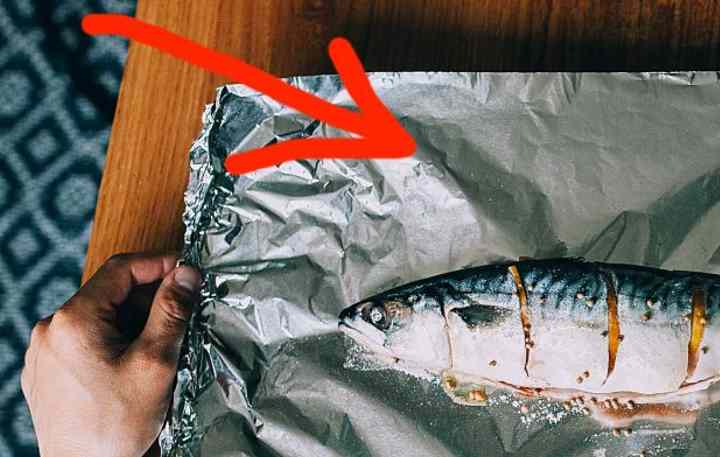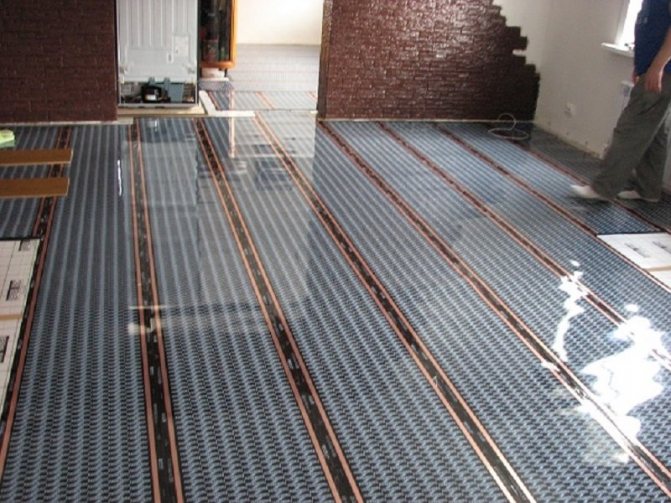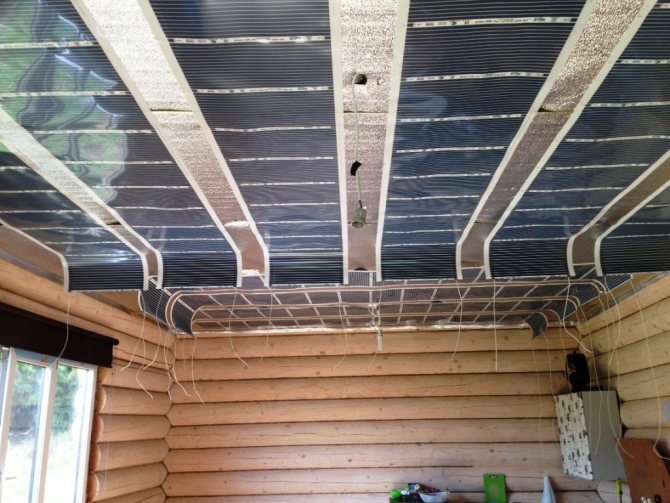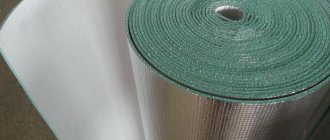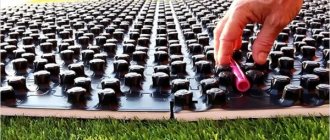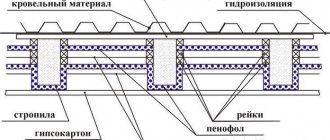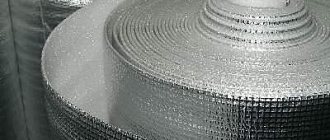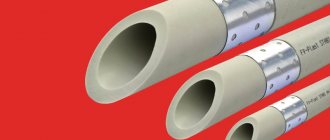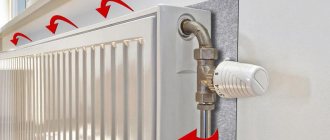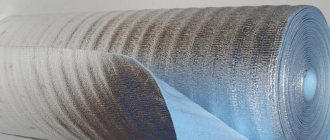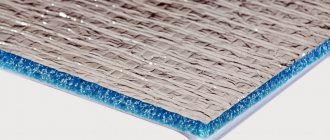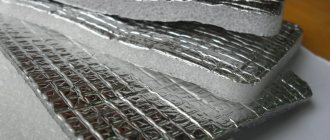Everything that the advertisement of the material says can be considered correct if it does not contradict the laws of physics. This time let's talk about reflective insulation such as penofol - insulation based on foamed polyethylene with a foil sheath. From the point of view of thermal physics, this material is no more complicated than any other insulation, but nevertheless it causes serious controversy among consumers.
Manufacturers of reflective insulation position it as a universal insulation with excellent thermal insulation properties, which are achieved mainly through the reflection of thermal radiation. As for the thermal conductivity of this material, it is at the level of other porous insulation materials, such as foam. More specifically, 0.038 W / mK. But due to the fact that penofol (if we count in volumes) is much more expensive than expanded polystyrene, it makes no sense to use it in traditional insulation schemes. It has a different "trick": 95% of the heat is reflected by the aluminum foil back into the room, and a thin layer of foamed polyethylene effectively resists the conduction of the small amount of heat that the foil "absorbs". At least, this is what the penofol manufacturers say, but not only they ...
As practice shows, the main promoters of various building materials, including heat insulators, are sellers. However, unfortunately, they cannot be trusted at all, especially in such delicate cases as insulation. The business of the sellers is trade. They get information about the product from the same sources as the consumer. However, unlike the latter, they very rarely bother to look at the same Internet to find out the other side of the coin.
For the sake of the purity of the experiment, I personally walked around three large construction stores, and asked the sellers the same question: "Where is reflective insulation used and what are its features?" Their answers surprised me with their accuracy and similarity. All of them practically quoted what was written in the advertising brochure. Moreover, as it turned out, the manufacturers were different, and the information in the brochures - with only minor differences. In short, penofol can and should be used everywhere and everything - it is very convenient to use, does not take up much space, returns heat back, and, among other things, it is also a protective shield against electromagnetic radiation and even radon. At this point, inexperienced buyers nod in understanding, and begin to experience a slight complex about their backwardness from life. That's what it is calculated for, because the goal of any business is to sell more. And mind you, neither the advertisement nor the seller, in fact, lied. Penofol really insulates (a little, but still), returns heat (under one very important condition, which will be discussed later), protects from external electromagnetic radiation (here the truth is, without any "buts"). As they say in such "difficult cases" - let's figure it out!
What reflects the shiny surface of the foil
The explanation about reflection looks plausible: from the school physics course, we remember this property of shiny surfaces. But what do they reflect when cooking in the oven?
There are three ways to transfer heat: conduction, convection, and thermal radiation. When cooking in the oven, the last two are decisive, since neither the baking sheet nor the foil comes into direct contact with the heating elements.
Convection
In the oven, heat is transferred to the product from the heating elements through the movement of air. There is convection in any oven, not only in the one that has this word in its name.If we are talking about a convection oven, we mean a fan that moves the heated air faster.
A shiny (or matte) surface does not affect convection. The foil will heat up, no matter which side it comes into contact with the product, and transfer this heat.
More important here is how tightly the foil is wrapped around the contents. If air is left between the product and the aluminum sheet, it can become an insulating barrier and slow down the transfer of heat.
Heat radiation
Convection is most important in oven cooking, but radiation is responsible for some of the heat transfer. It is emitted by any object with a temperature above absolute zero (-273.15 ° C), that is, all elements of the oven and all its contents.
For infrared radiation, the side of the foil will matter: the shiny surface reflects the rays, the matte surface catches. But this difference in heat transfer is only important for highly sensitive instruments. The side of the foil will have little effect on the speed of cooking dinner.
Using specially sunscreen film
A film specially designed for sun protection is a little more expensive, but more reliable. It relieves the landlord of all of the above disadvantages of using ordinary food foil.
Benefits of sun protection film:
- strength - the film is dense and elastic, and not fragile like foil;
- dimensional grid suitable for use on windows (length - 3 m, width - 0.6-1 m);
- affordable price - on average, a roll of film costs 100 rubles;
- good appearance, provided that it is neatly installed;
- transparency - sunlight will sufficiently illuminate the room, while not heating it.
By applying a sunscreen on the window, you get a slightly tinted glass that will reflect excess radiation from the outside.
Please note: in the daytime, film-coated glass perfectly protects windows from the eyes of passers-by, since they create a mirror image. However, at night, when the lights are on, the room will be viewed very well, so do not forget about the use of curtains.
There are two types of such window film - adhesive on glass and curtain film. Let's analyze the features of using both materials in order to understand which one is best suited in a particular case.
Adhesive Sun Protection Film
This version of the film is glued directly to the glass. With its help, the effect of surface tinting is created. The advantage of this method is that the material is durable and can be used for several seasons in a row (remember that UV rays enter the room not only in summer).
Which side of the foil should contact the food
Experts believe that in this matter you can completely rely on your taste, since there are no functional differences. Robert Wolke writes about this in his book What Einstein Told His Chef. To a similar conclusion Is There A Right And Wrong Side Of Aluminum Foil? Reynold's Kitchen experts came.
The question of which side to use the foil is important only for aluminum sheets with a non-stick coating. In this case, the manufacturer recommends placing the products on the matte side marked non-stick.
Application of aluminum foil in the home
- To improve the efficiency of the radiator, you can attach the foil (shiny side in the room) to the wall behind the radiator. The room will become noticeably warmer.
- Aluminum foil can help not only heat the house, but also cool it. If you do not have a special protective film against the sun's rays at hand, then you can make a window protection yourself. It is enough to glue the foil onto a sheet of paper and the reflective curtain is ready. It should be hung on the window with the foil facing out.
- If you have a fireplace in your house, and you want to reduce the time it takes to clean it, then you should put folded foil in several layers on the bottom of the fireplace (under the firewood grate) before starting the fire. And you only need to remove the cooled ash along with the foil.
- With the help of foil, you can protect any surfaces and objects from contamination during painting.
- A small piece of foil can be used to secure an unstable battery.
- And in the article "How to clean silver at home" you can learn how to clean jewelry with foil.
- Also, small pieces of foil can facilitate the rearrangement of furniture if you slip them under the furniture legs. How else you can rearrange furniture without much effort, read the article "Rearranging furniture without problems".
- If your scissors are dull, then use the advice - cut the folded foil in several layers. After that, the scissors will still serve you.
- Damage to your old mirror can be masked by placing a piece of foil on the back of the mirror, securing it. The damage will not be conspicuous.

Interesting
A big piece and your mouth is happy? Sweets and other culinary temptations are sold mainly in small packages. It is believed that this helps to control the amount of "harmful" eaten. But according to a study by European scientists, in reality things are a little different. A small package of high-calorie sweets is often considered quite permissible and provokes to eat more. Large packages, on the other hand, make people think about overeating and limit themselves accordingly.
The study proceeded as follows. In a group of participants, scientists activated "dietary concerns." Simply put, we made them think about weight and nutritional issues by passing a series of tests "How satisfied are you with your body", as well as weighing and measuring volumes in front of a mirror. The subjects believed that their purpose was to evaluate the commercials, but in fact, the scientists monitored the consumption of potato chips, which were provided free of charge in the room. The chips were in large and small packages. As a result, those who took large packages ate less. They hesitated longer before opening the pack and ate fewer chips.
Do I need to make holes in the foil when baking?
Some recipes require you to do this, others don't. There are no clear rules, only your preferences and what kind of dish you want to get in the end play a role:
- When the wrapper is sealed, the juices and marinade remain inside and the product is soft and juicy. They are pierced in those cases if they want the food to turn out more rigid;
- Also, if baked in juice, meat or fish is cooked in the "stewing" mode and becomes looser. If you release the liquid, the food will be covered with an appetizing crust.
The ideal option is to pierce the wrapper not immediately, but 20 minutes before you need to remove the baking sheet from the oven. Then the food will have time to be covered with a crust, and the pulp will be well baked.
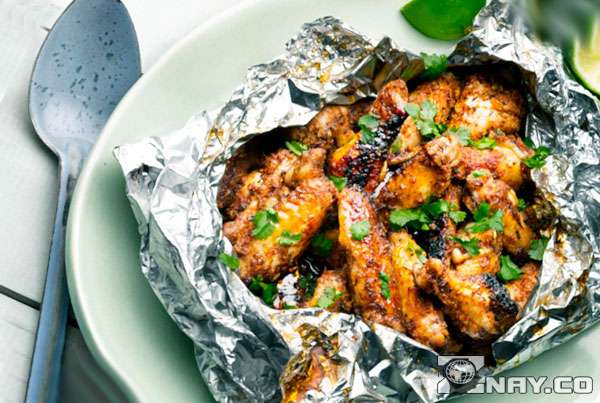

How to wrap food correctly?
But you need to wrap meat or fish before cooking right, otherwise the temperature inside will be insufficient or the juice will flow out and burn:
- The wrapper must be intact, otherwise juice or fat can leak out through the holes and the dish will be dry, and even burn;
- The fins of the fish must be trimmed, otherwise they will tear the packaging.
- To prevent the foil from burning, lubricate the inside with sunflower oil.


Foil properties
Aluminum foil can be called a unique material, because it:
- reflects light and infrared rays;
- insulates (keeps) warm;
- easily takes the desired shape;
- does not interact with water;
- does not transmit light, gas, grease, steam;
- is lightweight;
- environmentally friendly;
- does not react with chemicals;
- is not a habitat for bacteria;
- not magnetized;
- does not absorb or transmit odors.
When ironing
13. Speed up ironing... When you iron your clothes, much of the heat from the iron is absorbed by the ironing board itself, forcing you to make several strokes to iron the fabric. You can speed things up by placing a sheet of aluminum foil under the ironing board. The foil reflects heat back onto the laundry and it smoothes faster. You will love this way of ironing so much that you will probably place the foil under the cloth cover of the board and leave it there forever.
14. Foil will help you smooth out stubborn folds on clothes that, no matter how ironed, do not want to be ironed in any way. It happens that the fabric does not tolerate high temperatures, it can be viscose, silk, wool. But it is on such fabric that wrinkles appear more often, which spoil the appearance of the product. Place some of the foil on the ironing board, then place the non-ironed clothes on top, add steam on your iron and feel free to iron. The resulting high, humid temperature emanating from the foil will help smooth out wrinkles and restore your clothes to their former beauty.
15. Bonding patches. Iron-on patches are an easy way to patch small holes in your clothes, as long as they don't stick to the ironing board. To prevent this from happening, place a piece of foil under the hole. It will not stick to the patch, and when finished, you can easily remove it.
16. Cleaning the iron. Is there a layer of starch on the soleplate of the iron and it starts to stick to the fabric? To remove build-up, iron a piece of aluminum foil with an iron.
Which side should you use the foil when baking
Hostesses know that the gloss of the foil on both sides is different. One half is more mirrored, the other is matte, with almost imperceptible roughness. This difference is explained by the technology of sheet production at the plant.
When there is a choice, doubts always arise. Likewise, cooks working with foil for baking in the oven have a question: "On which side of the foil should I put food?"
Those who understand physics approach the issue from a scientific point of view. If the mirror side reflects heat rays more strongly, then to speed up the cooking process, food should be placed on the glossy foil surface. The matte side will then be outside. It will absorb more heat, which means the dish will cook faster.
Foil is placed with the shiny side out when it is necessary to reduce overheating. In this case, the reflectiveness of the gloss will protect the culinary product from scorching or overdrying from the top and sides.
If food is cooked without oil, it may stick to the foil after baking. It is more difficult to stick to a smooth, glossy surface, so non-greasy and dry products are placed with the shiny side inward.
Studies have shown that the difference in reflectivity for both surfaces is small - about 10%. When baking large pieces of meat and poultry, this difference becomes almost imperceptible and does not in any way affect the duration and quality of cooking.
Principle of use
Quite often, housewives have a question about which side to put the foil on the baking sheet. It is worthwhile to understand this in as much detail as possible.
The structure itself of a thin aluminum baking sheet has two sides: shiny and matte. The result of the cooked product depends on which side to put the foil on the baking sheet. The shiny side of the coating used reflects the heat received much better and does not stick to the dish. That is why it is worth giving preference to her.
If you were in doubt about which side to put the foil on the baking sheet, and accidentally put the matte side up, there is nothing to worry about.However, it should be noted that dishes with a sour taste may not turn out as expected. This is because the matt part of the aluminum sheet reacts with acid.
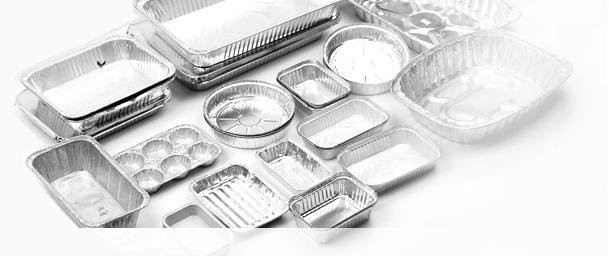

Baking foil - myths and truth
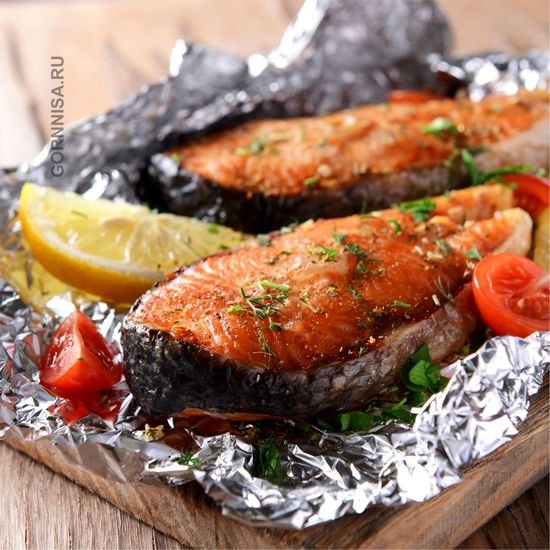

image - depositphotos Undoubtedly, many housewives are happy to use foil for baking It is very convenient, practical, fast and clean
Nevertheless, the question of the toxicity of aluminum foil constantly appears on the Internet It's time to put an end to it


image - depositphotos
So, baking foil is bad for you? Myths and truths about food grade aluminum foil
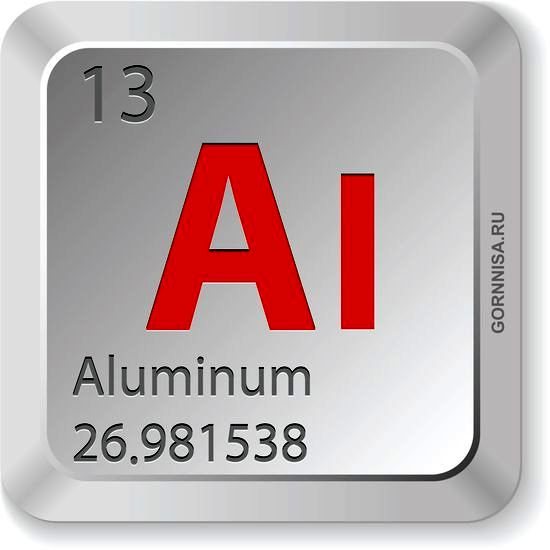

image - depositphotos
Myth: Aluminum is extremely harmful to health, even in minimal doses. Truth: If we talk about the health risks associated with the ingress of aluminum molecules into the human body, then everything is simple and understandable.Aluminum is found in plant products in an insignificant form, aluminum molecules are present in air, water, in food additives and some medicines Aluminum very quickly is excreted from the human body and does not pose any danger There more, in the amount that can presumably enter the human body if you use aluminum foil
Myth: Aluminum is one of the causes of Alzheimer's disease.Truth: The latest and most recent research provides compelling evidence that aluminum does not in any way contribute to the development of Alzheimer's disease.
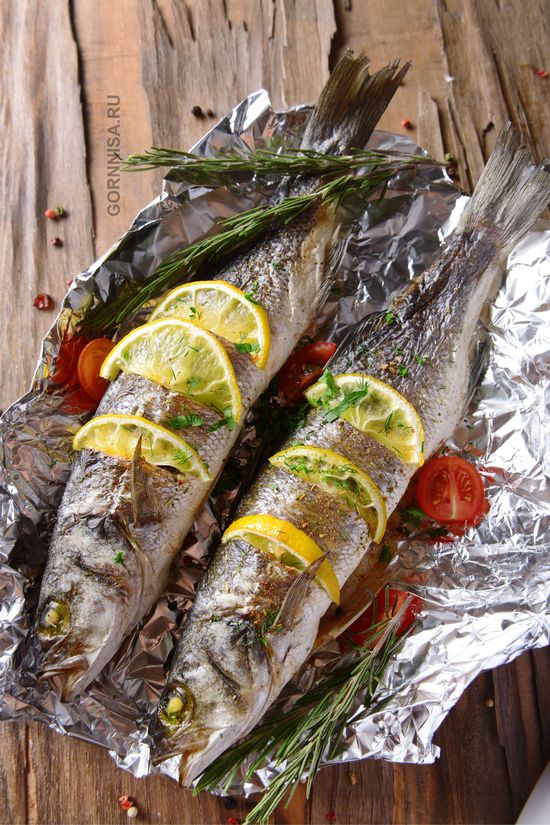

image - depositphotos
Myth: Heat and acidic foods leach aluminum into food.Truth: Undoubtedly, at high temperatures and in an acidic environment, a chemical reaction will begin, however, this requires a very high temperature, a very acidic environment and a fairly long time.Nevertheless, if you intend to bake food at temperatures above 200-250 degrees Celsius, do not use aluminum foil, but edible parchment paper, and if you plan to store cooked food for a long time, put it in glass dishes.However, this is a general requirement when preparing and storing any food
So, in most cases, observing the general principles and rules of cooking and storing food, there is no reason to worry about your health when using food grade aluminum film.
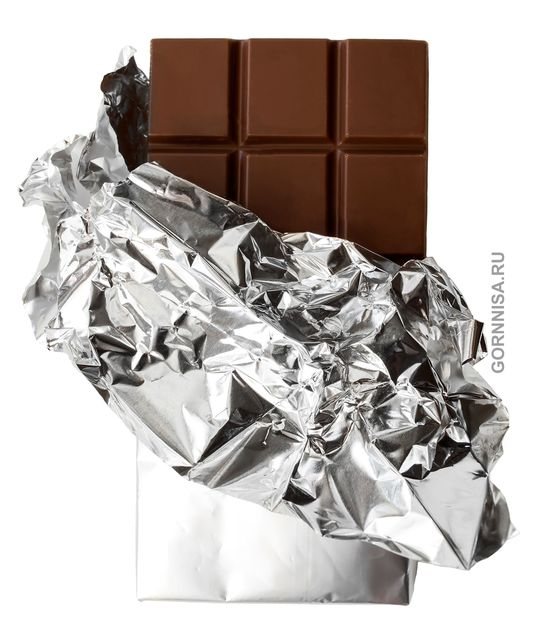

image - depositphotos
A few facts about aluminum foil: - The word "aluminum" is spelled this way - For the first time aluminum foil was used in France, wrapping chocolate bars in it - One side of the foil is shiny, the other side is matte. This is just a technological feature - you can wrap food in foil either side - Brown sugar is sometimes extremely hard - wrap it in foil and put it in the oven for five minutes - Plucked celery withers very quickly, even if kept in the refrigerator - Wrap the celery tightly in aluminum foil , it will last much longer
Your GORNNISA.RU
Material properties and features
Conventional foil is made from a variety of metals - tin, steel, gold, or silver. They are rolled through large shafts, on which the gap gradually decreases. In this way, sheets of metal "paper" of the desired size are obtained, which are then rolled into rolls.
Foil, however, suitable for the preparation or storage of food (food), is made made of aluminum... It is most often found in the store. This material is considered the safest, it can come into contact with food.
In addition, it has the following properties:
- Does not melt;
- Does not cause allergies;
- Able to keep warm.
Foil as a heating element
Some time ago, domestic consumers were given the opportunity to use another option for heating their homes. This is an infrared heating system based on foil.
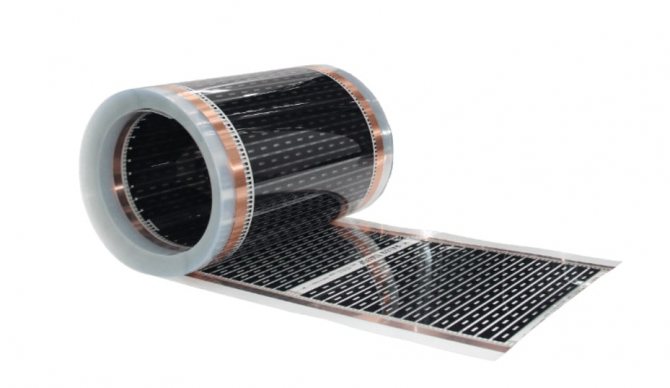

In this system, the main element that provides heating is made in the form of a foil on a metal base, having a small thickness, which is surrounded on both sides by a pair of plastic films.
Foil top cover
When baking pastries or baking vegetables, many housewives want to keep the surface of the dish soft and juicy. Unfortunately, this does not always work. Under the influence of high temperatures, a tough crust forms on the baking, and vegetables lose moisture and juice.
In this case, ordinary foil will also be an excellent helper. Just place it on top of the product and fix it well. It is worth recalling which side of the foil to cover the baking sheet with in this case.
Choose the matte side to keep your food soft and juicy. Just remember that this only applies to the top layer.
Application of aluminum foil outside the home
- You can slightly increase the outdoor lighting by making a foil reflector by placing it behind the lamp.
- On a hike, aluminum foil can come in handy in many cases.
- If you didn't have any dishes on a hike or at a picnic, then you can make all the necessary utensils from foil: plates, cups. You can even make an impromptu frying pan out of spear and foil.
- To bake potatoes or other foods over the fire, of course, it is better to pre-wrap them in foil.
- The matches can be protected from moisture and dampness with foil.
- On cool nights, the tent can be heated with stones heated in a fire. And so that the stones are not stained with ash, they can be wrapped in foil beforehand.
- If you are traveling during the cold season, you can attach foil to one side of the insoles. This will keep you warm.
On a note
► To keep the fish fresh longer, it must be gutted and scaled before being placed in the refrigerator. ► Greens will not wilt for a long time if you put a quarter of an onion in the bag where it is stored. ► Do not store apples in the same bag with other fruits and vegetables. This "neighborhood" leads to the fact that vegetables and fruits deteriorate faster. ► Milk must not be in the refrigerator door. In order not to turn sour, milk needs a constant temperature, and slamming the door prevents it from being maintained. ► Do not wash vegetables and fruits before placing them in the refrigerator. ► The oiler must not be transparent. Oil quickly deteriorates in the light.

